目次
- 1 Bessent: Fed ‘Frozen at Wheel’ as US Debt Crisis Looms
- 1.1 Bessent’s Key Statements and Their Context
- 1.2 The 2022 Fed Shock – The Cost of Overly Aggressive Tightening
- 1.3 Yield Curve Signals Economic Instability
- 1.4 Structural Problems in the Treasury Market and Fiscal Risks
- 1.5 Political Maneuvering Around Fed Chair Appointments
- 1.6 Uncertainty from Trump Administration Policies
- 1.7 Future Fed Rate Cut Outlook – Expert Predictions Diverge
- 1.8 Spillover Effects to the Global Economy
- 1.9 The U.S. as an “Epicenter of Uncertainty”
- 1.10 Fiscal Structure Problems and Social Security
- 1.11 Role and Limitations of Credit Rating Agencies
- 1.12 Bond Market Fundamentals – Key Concepts for Investors
- 1.13 Implications for Investors – Future Market Outlook
- 1.14 Conclusion – The U.S. Financial System at a Turning Point
Bessent: Fed ‘Frozen at Wheel’ as US Debt Crisis Looms
In 2025, the U.S. economy stands at a critical juncture. Treasury Secretary Scott Bessent’s recent comments to Bloomberg Television have transcended mere policy criticism, exposing fundamental problems within America’s financial system. His shocking metaphor—that “Fed officials seem frozen at the wheel”—has sent ripples through financial markets.
Bessent’s Key Statements and Their Context
Treasury Secretary Bessent suggested that given current Treasury yield levels, it doesn’t make sense for the government to increase long-term bond issuance. The Secretary stated that “increasing long-term bond issuance is something that should have been done in 2021 or 2022,” indicating there’s no need for it now.
Interestingly, this means that despite his predecessor Janet Yellen being criticized for increasing dependence on short-term debt, Bessent himself has continued Yellen’s Treasury issuance strategy since taking office.
The Secretary stated that while the level of 10-year Treasury yields through year-end depends on many factors, he believes the entire yield curve could shift down in parallel as inflation slows.
Scathing Criticism of the Fed
Regarding monetary policy, Secretary Bessent described Fed officials as appearing “frozen at the wheel.” He expressed concern that “having disappointed the public in 2022, the Federal Reserve is looking only at its feet” and not looking forward, suggesting the Fed’s fixation on the past is problematic.
The 2022 Fed Shock – The Cost of Overly Aggressive Tightening
Behind Bessent’s criticism of the Fed lies the monetary tightening measures implemented since 2022 and their impact. Let’s examine the Fed’s actions during this period in detail.
Timeline of Rapid Rate Hikes
The Fed began raising rates in March 2022, increasing the policy rate by 5% in just under two years. The specific timeline of this dramatic policy shift:
- March 2022: Rate hikes begin
- June 2022: Following an unexpectedly high May CPI reading, the Fed decides on a 0.75 percentage point hike—the largest increase in 27 years and 7 months. The year-end outlook was sharply revised upward to 3.4%
- September 2022: The Fed decides on a third consecutive 0.75% hike, raising the fed funds target range to 3.00%-3.25%. At this point, the year-end 2022 policy rate outlook was sharply revised to 4.4%, with the 2023 year-end projection at 4.6%
Simultaneous Quantitative Tightening (QT)
The Fed also implemented quantitative tightening, reducing its holdings of Treasuries and other assets. The balance sheet has shrunk from a peak of approximately $9 trillion to around $6.81 trillion as of February 12, 2025. This massive asset reduction rapidly absorbed liquidity from financial markets, adding additional pressure.
Shift in Inflation Perception
Following the pandemic, U.S. inflation far exceeded Fed forecasts and proved persistent. The Personal Consumption Expenditures (PCE) price index rose well above the Fed’s median projections.
In November 2021, Fed Chair Powell finally stopped viewing inflation as transitory and began aggressively raising rates in 2022. The Fed has stated it is strongly committed to returning inflation to its 2% target.
Yield Curve Signals Economic Instability
The yield curve dynamics mentioned by Secretary Bessent are crucial for understanding financial markets and economic outlook. The yield curve graphs the relationship between bond maturity periods and yields, serving as an important indicator for predicting future interest rates and economic conditions.
Basic Yield Curve Concepts
The yield curve typically shows a “normal yield” pattern, sloping upward to the right with yields increasing as maturity periods lengthen. This occurs because investors demand higher yields for longer periods due to increased risks like price volatility.
An “inverted yield curve” is a reversal phenomenon where short-term bond yields temporarily exceed long-term bond yields. This phenomenon is generally interpreted as a “harbinger of recession.”
Historic Prolonged Inversion
At the end of March 2022, the U.S. 2-year Treasury yield temporarily exceeded the 10-year yield, creating an inverted yield curve. This inversion persisted consistently from July 2022, reaching -1.06% on June 30, 2023—the largest spread since 1981, a 42-year record.
This resulted from the Fed’s rapid rate hikes pushing up short-term rates while long-term rates remained subdued as markets priced in future economic slowdown and subsequent rate cuts. On September 4, 2024, both the 2-year and 10-year yields reached 3.75%, finally ending the inversion that had lasted over two years.
Special Nature of High-Inflation Inversions
Yield curve inversions during high inflation periods like the present warrant particular caution. For example, during the 1973 high-inflation inversion, stock prices were negative after 3 months, 6 months, and 1 year. This is because the Fed may continue tightening even as the economy deteriorates to prioritize inflation control.
Since the 1970s, inversions have tended to occur 1-2 years before U.S. recessions. However, inversions haven’t always led to recessions, and stock markets haven’t always immediately entered downtrends.
Yield Curve Shape Changes and Their Meaning
Steepening: When the yield curve slope becomes steeper and the long-short rate differential widens. “Bear steepening” (long rates rising more than short rates during rate increases) often signals economic recovery, while “bull steepening” (short rates falling more than long rates during rate decreases) typically occurs during recessions.
Flattening: When the yield curve slope becomes gentler and the long-short rate differential narrows. “Bear flattening” (long rates rising less than short rates during rate increases) occurs when central bank rate hikes are expected, while “bull flattening” (short rates falling less than long rates during rate decreases) happens during recessions when monetary easing becomes likely.
Structural Problems in the Treasury Market and Fiscal Risks
Secretary Bessent’s comments on long-term bond issuance reflect the serious state of U.S. fiscal conditions and the Treasury market.
Ballooning Fiscal Deficits
U.S. debt exceeds $36 trillion and is projected to reach 134% of GDP. The fiscal 2023 deficit reached $1.6951 trillion, the largest since the pandemic.
Of particular concern is the sharp increase in net interest payments due to rising rates. The ratio of interest payments to tax revenue surged to 37.8% in Q3 2024. Fed Chair Powell has also pointed to fiscal deterioration as a factor in rising long-term rates.
Failed Debt Management Policy
The Treasury’s failure to increase the proportion of long-term debt during the 2020-2021 low-rate environment, instead increasing short-term debt ratios, resulted in greater exposure to rising rates. Some investors have criticized this as a “debt management policy failure.”
Secretary Bessent’s statement that “long-term bond issuance increases should have been done in 2021 or 2022” essentially acknowledges this failure.
Historic Downgrade by Moody’s
On May 16, 2025, Moody’s Ratings downgraded U.S. debt from the top “Aaa” rating to “Aa1.” The reasons for the downgrade:
- Increasing national debt
- Persistent fiscal deficits
- Lack of structural reforms
This downgrade is noted to potentially lead to a structural rise in term premiums (the additional yield investors demand for holding long-term bonds).
Global Investors Moving Away from Treasuries
Janet Yellen (former Treasury Secretary and Fed Chair) has stated that rising Treasury yields amid current high uncertainty suggests foreign investors are beginning to question the credibility of U.S. policy and America’s role in the global economy.
Typically, uncertainty drives funds into safe assets like Treasuries, lowering yields, but the opposite is occurring. This suggests the status of Treasuries as a “safe asset” is beginning to waver.
Political Maneuvering Around Fed Chair Appointments
Past turmoil over Fed Chair appointments provides insight into factors that will significantly impact U.S. monetary policy in 2025.
The Fierce Debate Between Summers and Yellen
In late July, a Washington Post blog article reported that Larry Summers was the leading candidate for the next Fed Chair, suddenly intensifying the debate over the selection. While a former Treasury Secretary, Summers’ status as a leading candidate despite lacking deep involvement in monetary policy formation shocked the Fed internally, major media outlets, and New York financial markets.
Following this report, other media and market participants produced a flood of articles and comments displaying an overtly “anti-Summers, pro-Yellen” stance. Markets and the Fed wanted to prevent Summers’ appointment as Chair as much as possible due to his frank speaking style and past verbal gaffes.
How the Financial Crisis Changed Selection Conventions
Traditionally, the White House economic team would narrow candidates through communication with the Fed and markets, with the President making appointments based on their input. This interdependence existed because appointing someone unsupported by the Fed or markets could disrupt monetary policy decisions and negatively impact the administration’s economic management.
However, the financial crisis broke this relationship. President Obama and his economic team had absolute trust in Summers’ economic management abilities, having led the economic recovery from the financial crisis. Meanwhile, for markets and the Fed, the hero of crisis recovery was Chairman Bernanke, and they had little connection to Summers, who hadn’t been involved in monetary policy.
In the Senate, liberal Democratic senators compiled letters promoting Yellen for the next Chair, citing the unconvincing reason that financial deregulation Summers promoted in the 1990s caused the financial crisis. Meanwhile, doubts about Yellen’s organizational management abilities began emerging, creating a mudslinging contest between both sides.
White House Intervention and Lessons
Since stable monetary policy management requires financial market confidence in the Fed Chair, such mudslinging was unacceptable to the Obama administration. Therefore, in late July, the White House stopped the debate over the Chair appointment in just four days.
Even if candidates were narrowed to Summers and Yellen, weaknesses remained: Yellen’s distance from President Obama, and Summers’ lack of direct monetary policy experience.
Uncertainty from Trump Administration Policies
Should Trump become President again, his policies are expected to significantly impact Fed monetary policy.
Tariff Policy and Inflation Pressure
Trump administration import tariffs could push up inflation and negatively impact economic activity, affecting Fed policy decisions. Yellen has pointed out that Trump administration tariff policies could impose approximately $4,000 in annual costs on U.S. households.
Tariffs push up inflation while dampening economic growth, making policy decisions difficult for the Fed with its dual mandate of maximum employment and price stability. Former President Trump has suggested imposing 25% tariffs on car imports from Canada and Mexico and indicated intentions to continue the trade war with China.
Increased Political Pressure on the Fed
Former President Donald Trump repeatedly intervened politically, openly pressuring the Fed for substantial rate cuts. He reportedly wanted to mitigate economic deterioration and financial market turmoil risks from tariffs through rate cuts, and intended to shift blame for economic decline to the Fed’s slow rate cuts.
Former President Trump stated he wouldn’t reappoint Fed Chair Powell for not implementing his desired monetary easing, increasing political pressure on the Fed. While Chair Powell states that Trump’s rate cut demands “have absolutely no effect on our work,” there are indications that concerns about being seen as yielding to political pressure and damaging Fed credibility may have actually hindered rate cuts.
Concerns About Fed Independence
The Fed is considered to have the strongest independence from the President among government agencies. Past Fed Chairs have emphasized the importance of Fed independence from politics, issuing statements hoping Chairs are selected based on ability and integrity rather than political loyalty.
Yellen expressed strong concerns about Trump’s attempts to nominate individuals far from the mainstream to the Fed Board, stating that if such individuals became Chair, the FOMC’s predictability would be lost, potentially harming healthy market performance and stability.
Future Fed Rate Cut Outlook – Expert Predictions Diverge
The timing and pace of Fed rate cuts remain a market focus. Secretary Bessent’s Fed criticism may influence future policy management.
Continued Cautious Easing Stance
While the Fed pivoted to rate cuts in September 2024, the pace of future cuts remains in focus as statistics suggest the U.S. economy remains robust.
The May 2025 FOMC maintained policy rates, suggesting the Fed will continue its wait-and-see approach for now. Chair Powell has indicated there’s no need to rush rate cuts. Fed policy decisions are made meeting-by-meeting based on comprehensive assessment of data, outlook, and risk developments.
Detailed Expert Rate Cut Predictions
Multiple outlooks exist, with different predictions ranging from one or two cuts in 2025 to potentially more:
- Franklin Templeton: Notes that the December 2024 FOMC raised policy rate outlooks for 2025 and beyond, showing the Fed’s stance of continuing gradual rate cuts while monitoring inflation
- MUFG Bank: Predicts the possibility of just one cut each in 2025 and 2026
- JTG Securities: Believes that absent significant economic indicator changes, rate cut timing could slip to Q4 2025 or later
The Fed’s stance of not yielding to political pressure and waiting for clear signs of economic deterioration in hard data also risks delaying policy responses.
Reflections on Past Excessive Easing
The substantial easing the Fed implemented when COVID-19 emerged in March 2020 appeared to compensate for resistance to Trump administration easing pressure, contributing to soaring prices and potentially overheating commercial real estate markets and increasing financial instability.
This past experience may explain the Fed’s current more cautious stance. Secretary Bessent’s criticism that they’re “looking only at their feet” suggests this caution may be excessive.
Spillover Effects to the Global Economy
Fed Chair selection and U.S. monetary policy will significantly impact U.S. monetary policy from February 2025 onward, affecting not just the U.S. economy but the global economy including Japan and emerging markets, as well as international financial and commodity markets.
Global Economic Outlook
The 2025 global economy is expected to maintain a moderate growth pace supported by inflation stabilization and monetary easing, despite uncertainties from U.S. administration policy management. The cruising speed will depend on U.S. policy developments.
Emerging market financial and commodity markets face particular challenges, having received substantial fund inflows from past U.S. ultra-easy monetary policy, making fund outflows inevitable as policy normalization approaches.
Impact on Japan’s Economy
Japan is forecast to advance toward complete deflation exit in a world with interest rates, despite temporary economic slowdown from U.S. trade policy impacts, amid rising wage momentum. Structural supply constraints like labor shortages are also key to economic resilience.
Treasury Secretary Yellen has stated that currency intervention by major countries including Japan “won’t necessarily work without fundamental policy changes,” emphasizing that major country exchange rates should be market-determined with intervention remaining extremely rare.
China’s Economic Policy Response
China reportedly needs to implement more aggressive fiscal policy and moderately accommodative monetary policy:
- Raising the fiscal deficit-to-GDP ratio
- Increasing ultra-long special government bond issuance
- Increasing local special bond issuance
- Timely reserve requirement and interest rate cuts
Emerging Market Attractiveness and Challenges
Emerging markets are the only region where inflation is undershooting market expectations, making local currency government bonds particularly attractive, especially in Latin America. If growth differentials between emerging and developed markets widen, high-grade emerging market corporate bonds could also benefit.
The U.S. as an “Epicenter of Uncertainty”
Pictet notes that U.S. soft power is steadily eroding, eventually leading to substantial increases in U.S. funding costs, with Trump administration policies accelerating this situation.
They state that as the U.S. has transformed from a source of global stability to an epicenter of uncertainty, a rush of global funds into the U.S. cannot be expected. President Trump has already given investors motivation to consider alternatives to Treasuries and the dollar, noting “there’s no going back.”
Rising Economic Policy Uncertainty Index
The U.S. economic policy uncertainty index has risen to levels not seen since the 2020 pandemic. While the full impact of escalating or easing trade frictions on the U.S. remains unclear, Treasury yields serve as important indicators of funding costs in both domestic and foreign markets.
As the U.S. administration is influenced by market reactions to new policy announcements and the administration’s reactions to markets, uncertainty is expected to constrain economic growth.
Fiscal Structure Problems and Social Security
The U.S. faces structural fiscal deficits, raising risks of persistently high long-term rates.
Difficulty Reducing Fiscal Deficits
A June-July 2024 U.S. public opinion survey showed high priority for expanding federal spending on healthcare, public pensions, and infrastructure improvements, reaching around 50% even among Republican supporters, making fiscal consolidation through social security cost suppression appear difficult.
Therefore, high fiscal deficits are likely to continue. Defense and foreign aid spending tend to face suppression.
Role and Limitations of Credit Rating Agencies
Understanding the role and limitations of credit rating agencies that decided on the U.S. debt downgrade is also important.
Moody’s Ratings Evaluation Criteria
Moody’s defines credit risk as the risk that entities cannot fulfill contractual and financial obligations by due dates, or expected property losses if default events occur. They don’t address liquidity risk, market risk, price volatility, or other risks.
While taking necessary measures to consider information sources reliable, as they aren’t auditors, they cannot always independently verify the accuracy or validity of received information.
S&P Global Ratings Perspective
S&P ratings are current opinions on future creditworthiness of issuers or specific debt, not indicators showing default probability, nor guarantees of creditworthiness.
They may vary due to factors like performance changes, external environment changes, underlying asset performance, and counterparty credit changes. While using information sources judged reliable for rating analysis, they don’t audit or independently verify provided information and don’t guarantee information accuracy, completeness, or timeliness.
Fitch Ratings Evaluation Methods
Fitch ratings are relative risk assessments, and subtle risk differences may not be fully reflected even within the same rating category. They aren’t indicators predicting specific default probabilities.
While relying on factual information and conducting reasonable investigation and independent verification, they don’t guarantee information accuracy, completeness, or timeliness.
Bond Market Fundamentals – Key Concepts for Investors
Understanding basic bond market mechanics is crucial for properly interpreting Secretary Bessent’s statements.
Bond Price and Yield Relationship
Bonds are certificates confirming that holders lend funds to borrowers for repayment on specified dates, favored by investors seeking stable returns. When bond prices fall, yields rise; when prices rise, yields fall.
Rising yields suggest declining investor appetite for bonds, influenced by issuer repayment ability (country’s economic and fiscal outlook) and inflation expectations.
Treasuries’ Special Status
U.S. Treasuries are bonds guaranteed by the world’s largest economy and have traditionally been viewed as safe havens for funds. However, this correlation has broken down in recent instances.
Impact on Corporate Spreads
Corporate bonds can be “crowded out” by government bonds. If Treasuries flood the market without commensurate corporate yield increases, spreads (the difference between Treasury and corporate yields) compress, leading investors to judge they aren’t receiving adequate compensation for risk.
Implications for Investors – Future Market Outlook
Combining Secretary Bessent’s statements with current economic conditions, investors need to pay attention to the following points.
Near-term Outlook
If inflation continues slowing, the entire yield curve could shift down as Secretary Bessent suggested. However, expanding fiscal deficits and downgrade risks may limit long-term rate declines.
Medium to Long-term Risk Factors
- Upward rate pressure from worsening fiscal problems
- Rising political uncertainty
- Unexpected inflation resurgence
- Delayed Fed policy management
- International flight from dollars and Treasuries
Soft Landing Hopes and Concerns
Treasury Secretary Yellen has argued for achieving a U.S. economic “soft landing” while stating recession risks “aren’t completely eliminated.” Some experts see continued robust performance ahead in the rate hike phase, predicting recessions won’t be severe and will head toward soft landings.
Conclusion – The U.S. Financial System at a Turning Point
Treasury Secretary Bessent’s shocking statement that “the Fed is frozen” has highlighted serious challenges facing the U.S. financial system. Many structural problems are mounting: aftereffects of 2022’s rapid monetary tightening, prolonged yield curve inversion, ballooning fiscal deficits, and unprecedented U.S. debt downgrades.
The Secretary’s criticism that the Fed is trapped by past failures and not looking forward warns of lost monetary policy flexibility. Simultaneously, we must acknowledge the failure of debt management policy that missed the timing for long-term bond issuance.
For investors and business professionals, U.S. economic developments during this transition aren’t merely one country’s problem. U.S. monetary policy as the reserve currency issuer significantly impacts the global economy including Japan. Secretary Bessent’s frank statements show us the importance of facing U.S. economic reality and preparing for a new era.
Going forward, we’ll need to build flexible and cautious investment strategies while watching Fed policy pivot timing, paths to fiscal problem resolution, and political uncertainty developments. As the U.S. becomes an “epicenter of uncertainty,” the importance of globally diversified investment perspectives continues growing.
Related Articles:
- Why Fed Remains Cautious on July Rate Cut in 2025
- Summers Predicts Trump Will Pick Mainstream Fed Chair
- BoE Holds Rates as European Banks Cut: Trump Tariff Impact
- FOMC Holds Rates Steady Amid Growing Committee Division
Reference Sites: S&P Global Ratings | Fitch Ratings | Long-term Yield Curve Analysis | U.S. Treasury Securities – Wikipedia | Federal Reserve System – Wikipedia
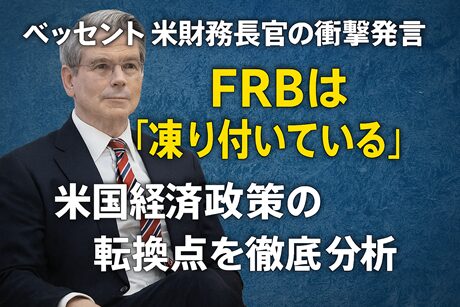
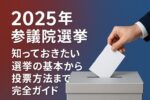



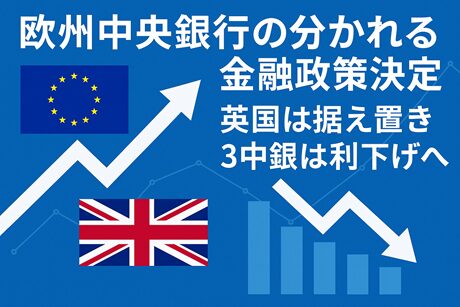
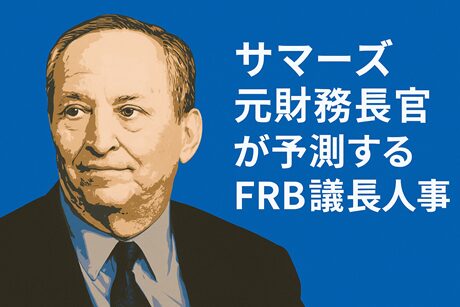
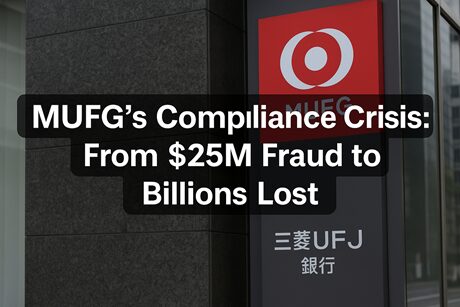
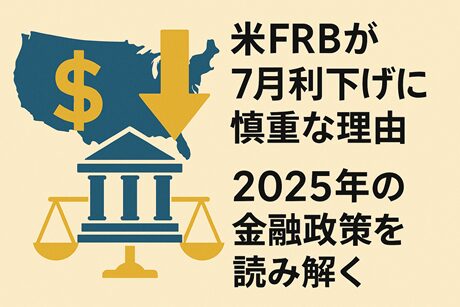


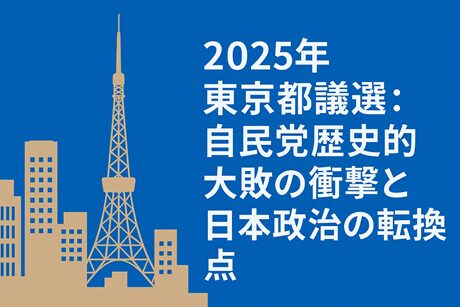



Leave a Reply